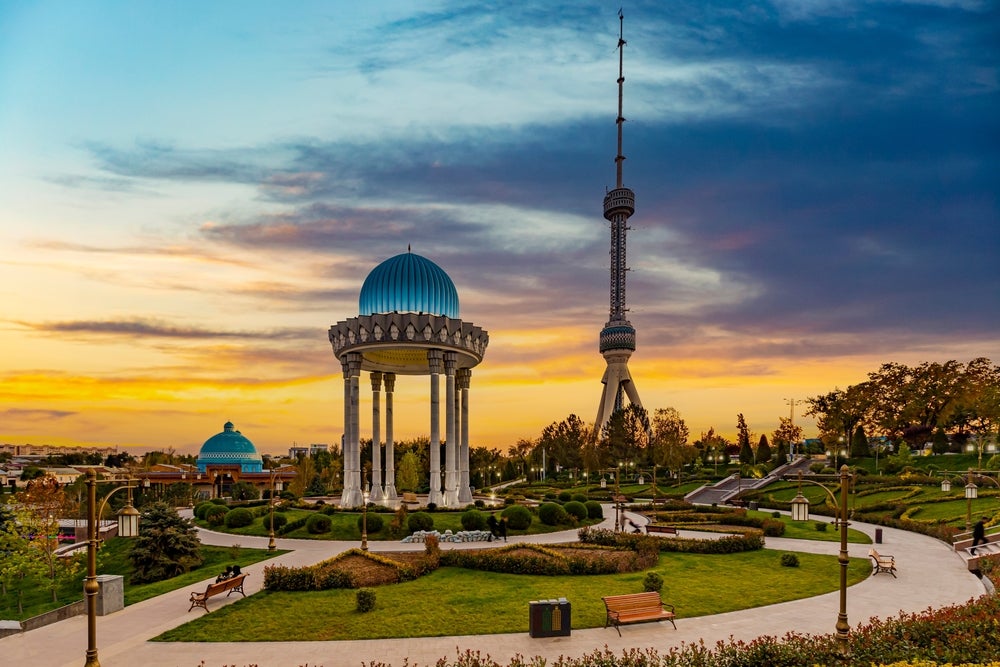Uzbekistan partners with IFC to boost FDI attractiveness but challenges remain
Uzbekistan asks IFC to improve FDI inflows Investment Monitor


Uzbekistan’s Reform Agenda to Attract Foreign Direct Investment (FDI)

Over the past six years, Uzbekistan has engaged in a reform agenda to liberalise its economy in a bid to attract foreign direct investment (FDI) and boost economic growth. The Central Asian state increased FDI inflows from a modest $1.73bn in 2017 to $2.53bn in 2022, according to the World Investment Report 2023, commissioned by the UN Conference on Trade and Development.
The Sustainable Development Goals (SDGs) and Uzbekistan’s Development Strategy
Under the Development Strategy of the New Uzbekistan for 2022–2026 (New Uzbekistan Strategy), the goals include increasing annual exports to $30bn. It also hopes to attract $70bn of foreign investment over the five-year period, with a particular focus on the power, transport, healthcare, education, green economy, utilities and water management sectors.
Partnership with International Finance Corporation (IFC)
To attract more FDI, Uzbekistan recently partnered with the International Finance Corporation (IFC), the private sector arm of the World Bank, to develop a new investment law as well as regulations for special economic zones (SEZs), according to a statement by the IFC.
“The goal is to align Uzbekistan’s current investment law with global best practices to boost foreign investment,” said IFC in a statement. “To do that, the IFC, in partnership with the government of Japan, will help the government of Uzbekistan to prepare a new investment law that clearly states market entry rules, ensures foreign investors and their investments are treated equally, gives investors access to international dispute settlements, and focuses only on FDI and private investments.”
The IFC will also help Uzbekistan implement rules to enable private sector participation in building and operating SEZs – including ensuring site selections are carried out with proper feasibility and environmental and sustainability analyses, the statement noted.
Daniel Zaretsky, global advisor for Central Asia at the Global Chamber, a trade and investment promotion consultancy, believes an enhanced investment law shows that Uzbekistan is trying to reform and improve as well as better understand what potential foreign investors need.
“If this project does what it is apparently intended to do and allows investors access to independent courts, and the laws for all sides are codified and are understood and respected, then it can be a big step forward,” he said.
However, the implementation of such reforms within Uzbekistan’s legal system can be complex. Added to this, the high turnover of administrative entities can make it difficult to pass proposals. This, coupled with a lack of transparency, a reputation for corruption, as well as external challenges, may impact Uzbekistan’s FDI levels.
Boosting Uzbekistan’s Investment Law
Since 2017, Uzbekistan has made reforms focused on improving its business environment and investment climate to attract FDI. Major reforms included currency liberalisation and, most notably, the investment law in late 2019. The law sought to offer greater protection for foreign investors. Provisions include guarantees for the free transfer of funds in and out of the country.
However, despite this progress, there are some gaps within the current law that make it difficult for private and smaller investors, according to an Uzbekistan-based lawyer.
“The investment law gave investors extra assurances, for example, in terms of guaranteeing free repatriation of profits. However, the law did not address all usual investor concerns such as stability provisions relating to the fiscal regime,” says the lawyer, speaking on the condition of anonymity.
The lawyer adds that only large-scale investors could negotiate deals and agreements with the government and enter into separate investment agreements with the government, which address such risks. “The end result is that the law does not grant sufficient levels of access to all investors in the Uzbekistan market on a competitive basis,” he says.
Similarly, the IFC adds that foreign investments implemented under public-private partnerships (PPPs) and production sharing agreements (PSAs) are not in the scope of the law, while the scope includes public investments that are not foreign investments.
“The certain provisions of the law have discrepancies with the provisions of bilateral investment treaties,” says the IFC. “These provisions limit the access of foreign investors to international arbitration and international minimum standards for the protection of investors. Also, several by-laws on FDI were issued in the past ten to 15 years and they are still in effect. Finally, investor protection clauses had to be improved.”
The IFC says that the proposed new draft law will further strengthen the existing 2019 law in the following areas:
- One umbrella law and one implementing regulation on foreign investments to improve predictability and transparency.
- Focus on regulation of private investments and private investors including the following forms: investment contract, PPP agreement, PSA, individual investor activity with no agreement with the government of Uzbekistan.
- One authorised body for investment policy regulation by Ministry of Investments, Industry and Trade and one single window for foreign investors.
- Access to international arbitration for foreign investors.
- Minimum standards on the treatment of foreign investors treatment.
In addition to the investment law, the IFC will assist Uzbekistan in enhancing its existing SEZ law (introduced in 2020) by helping to develop and implant regulations as well as capacity building.
The Gap Between Theory and Practice
While the proposed legislation is widely viewed as a positive step, the implementation can be a long and complex process, according to the lawyer in Uzbekistan.
“It is fine to create or update an existing law and draft it based on English law, but it does not make sense for a civil law jurisdiction,” he says. “[Hence], there is a disconnect between drafting and implementation of laws. A lot of laws suggested either by policymakers or by international development organisations lack an understanding of the Uzbek context and legal system.”
In addition to the implementation, the higher turnover of administrative entities in Uzbekistan means there can be a lack of opportunities for policymakers and lawmakers to evaluate
SDGs, Targets, and Indicators
SDG 8: Decent Work and Economic Growth
– Target 8.1: Sustain per capita economic growth in accordance with national circumstances and, in particular, at least 7% GDP growth per annum in the least developed countries.
– Indicator: GDP growth rate
SDG 9: Industry, Innovation, and Infrastructure
– Target 9.1: Develop quality, reliable, sustainable, and resilient infrastructure, including regional and transborder infrastructure, to support economic development and human well-being, with a focus on affordable and equitable access for all.
– Indicator: Investment in infrastructure as a percentage of GDP
SDG 17: Partnerships for the Goals
– Target 17.1: Strengthen domestic resource mobilization, including through international support to developing countries, to improve domestic capacity for tax and other revenue collection.
– Indicator: Domestic public and private investment as a percentage of GDP
Analysis
1. The SDGs addressed or connected to the issues highlighted in the article are SDG 8 (Decent Work and Economic Growth), SDG 9 (Industry, Innovation, and Infrastructure), and SDG 17 (Partnerships for the Goals).
2. Specific targets under those SDGs based on the article’s content are:
– Target 8.1: Sustain per capita economic growth in accordance with national circumstances and, in particular, at least 7% GDP growth per annum in the least developed countries.
– Target 9.1: Develop quality, reliable, sustainable, and resilient infrastructure, including regional and transborder infrastructure, to support economic development and human well-being, with a focus on affordable and equitable access for all.
– Target 17.1: Strengthen domestic resource mobilization, including through international support to developing countries, to improve domestic capacity for tax and other revenue collection.
3. The indicators mentioned or implied in the article that can be used to measure progress towards the identified targets are:
– GDP growth rate: This indicator can measure progress towards Target 8.1 of sustaining per capita economic growth.
– Investment in infrastructure as a percentage of GDP: This indicator can measure progress towards Target 9.1 of developing quality infrastructure.
– Domestic public and private investment as a percentage of GDP: This indicator can measure progress towards Target 17.1 of strengthening domestic resource mobilization.
4. Table presenting the findings:
| SDGs | Targets | Indicators |
|——|———|————|
| SDG 8: Decent Work and Economic Growth | Target 8.1: Sustain per capita economic growth in accordance with national circumstances and, in particular, at least 7% GDP growth per annum in the least developed countries. | GDP growth rate |
| SDG 9: Industry, Innovation, and Infrastructure | Target 9.1: Develop quality, reliable, sustainable, and resilient infrastructure, including regional and transborder infrastructure, to support economic development and human well-being, with a focus on affordable and equitable access for all. | Investment in infrastructure as a percentage of GDP |
| SDG 17: Partnerships for the Goals | Target 17.1: Strengthen domestic resource mobilization, including through international support to developing countries, to improve domestic capacity for tax and other revenue collection. | Domestic public and private investment as a percentage of GDP |
Behold! This splendid article springs forth from the wellspring of knowledge, shaped by a wondrous proprietary AI technology that delved into a vast ocean of data, illuminating the path towards the Sustainable Development Goals. Remember that all rights are reserved by SDG Investors LLC, empowering us to champion progress together.
Source: investmentmonitor.ai

Join us, as fellow seekers of change, on a transformative journey at https://sdgtalks.ai/welcome, where you can become a member and actively contribute to shaping a brighter future.







